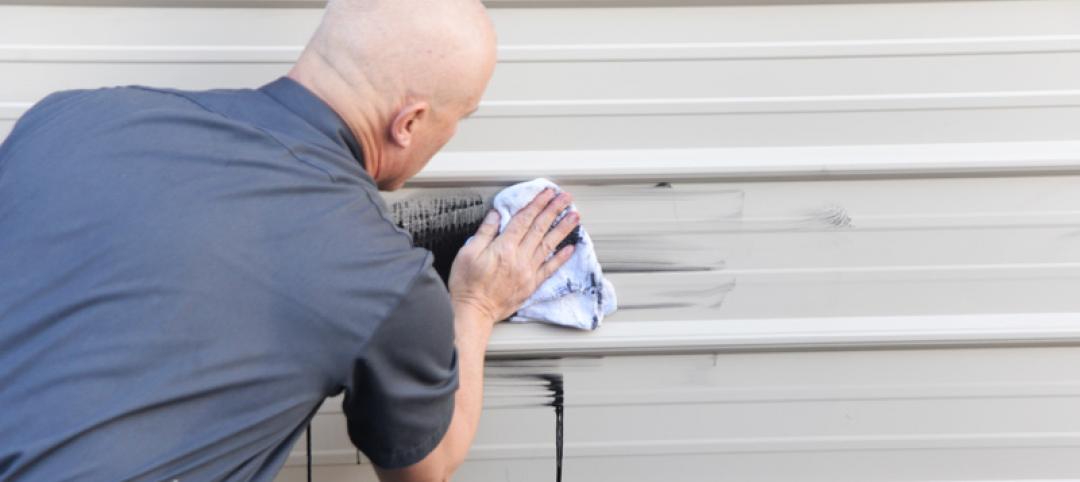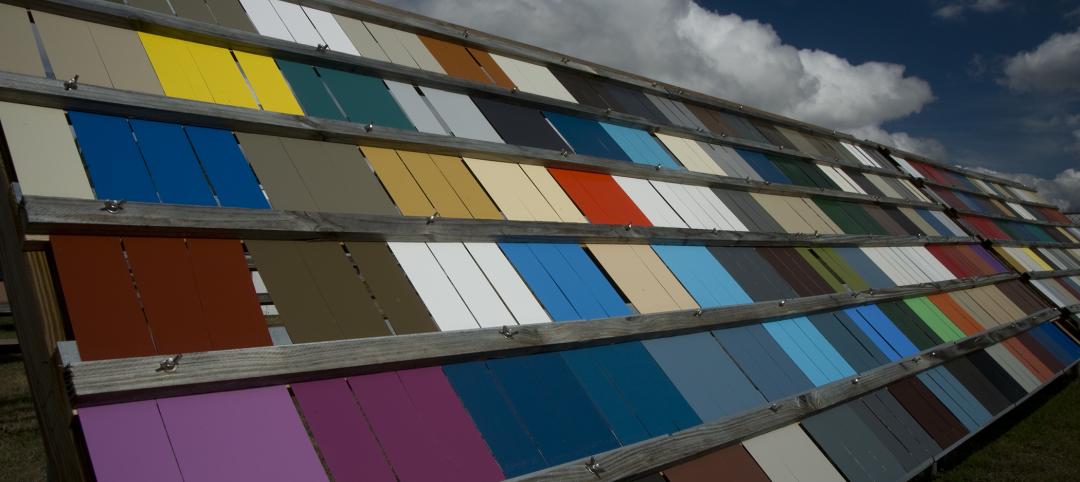The rapid pace of development of improved liquid-applied materials and finishes has given Building Teams new options. These sprayable, paintable, or “gunnable” products can add performance and sustainability benefits and reach new levels of resiliency and durability. Architectural finishes from the paints, coatings, and sealants developed with nano-enhanced substances include site- and factory-applied coatings for structural concrete, steel, metal panels, aluminum frames, and other specialty metals.
Fortified with nanoparticles, these assemblies are often stronger, more durable, more resistant to fire, and easier to clean than traditional product, according to the science blog Nanowerk (www.nanowerk.com). Some formulas with low or zero volatile organic compound (VOC) content have proven to be more resilient and stronger than their predecessors. In the case of masonry and concrete, the substances improve flowability and compacting--traits that improve the application of sealers and decorative finishes.
After reading this article, you should be able to:
- Discuss the key issues related to coating, paint, and sealant specification, including sustainability and air quality considerations.
- Describe how green standards, guide specifications and life cycle assessments, and environmental product declarations are used in the context of paint and coating selection and application.
- List typical substrates for coatings, such as concrete and metal, and the key correlated considerations for coating selection.
- Explain why in some circumstances it may be better for coatings and paints to be applied in the shop–and in some cases, why the materials might be better treated with anodizing or with no coating at all.
Take this free AIA course at BDCuniversity.com
Related Stories
Sponsored | Coatings | Apr 27, 2015
Graffiti-Resistant Coatings To Keep Projects Looking Their Best
There are now several options available to keep buildings looking their best, which often includes both a coating system and an associated chemical graffiti remover
Sponsored | Coatings | Apr 20, 2015
Wayfinding With Color
Color’s prominent role in wayfinding has become a focus in architecture, as color association is strong and memorable for regular occupants and occasional visitors alike.
Sponsored | Coatings | Apr 20, 2015
Valspar delivers custom coating solution for JW Marriott Austin
Stunning design by HKS leaves onlookers wondering—weathered steel or coating?
Sponsored | Coatings | Apr 20, 2015
Removing graffiti without a trace
The issue of graffiti removal inspired Valspar scientists to develop a graffiti resistance system, which has been tested and approved
Sponsored | | Apr 20, 2015
MBCI coated roof and wall panels virtually graffiti proof
A new effective solution that is biodegradable and water-soluble can help building owners and municipalities save millions of dollars.
Sponsored | Coatings | Apr 13, 2015
Graffiti vandalism is on the rise
Graffiti is the most common form of vandalism, and its cleanup is burdening businesses and property owners.
Sponsored | Coatings | Apr 3, 2015
Make a statement by the sea
With salt stray and intense summer sun, coastal coatings take a real beating. When selecting a coating in these harsh environments, it is essential to select one formulated to withstand sea salt and ultraviolet rays.
Sponsored | Coatings | Mar 24, 2015
Natural weather testing ensures high quality products
Instead of relying on outside testing facilities, where it is more difficult and expensive to constantly monitor results, the test fence allows a higher level of accuracy and diligence.
Sponsored | Coatings | Mar 13, 2015
What defines a good, better or best coating system?
Resins, the base ingredient in any coating, vary in performance qualities from good to better to best. Selecting the right coating for the specific application and desired effect is key.
Sponsored | Coatings | Mar 6, 2015
How do the new Energy Star standards impact coatings?
The Energy Star 3.0 Roof Product Specs and Test Methods is changing its standards, and all coating manufacturers are required to meet the new standards by March 1, 2017.


![Wet-applied coatings and finishes for commercial and institutional projects [AIA course] Wet-applied coatings and finishes for commercial and institutional projects [AIA course]](/sites/default/files/aiacourse.jpg)













